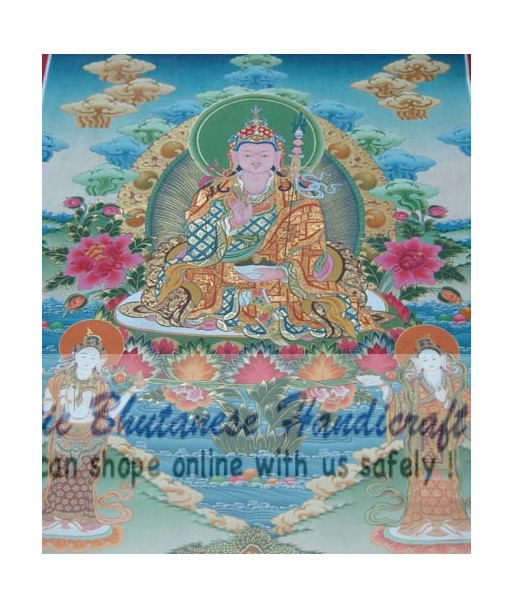- -50%






A **Guru Thanka** painting, also known as a **Guru Rinpoche Thanka**, is a traditional Tibetan Buddhist artwork that depicts Guru Rinpoche, also known as Padmasambhava. He is a highly revered figure in Tibetan Buddhism, credited with establishing the Vajrayana tradition in Tibet and spreading the teachings of Buddhism there
 Security policy
Security policy
(edit with the Customer Reassurance module)
 Delivery policy
Delivery policy
(edit with the Customer Reassurance module)
 Return policy
Return policy
(edit with the Customer Reassurance module)
A **Guru Thanka** painting, also known as a **Guru Rinpoche Thanka**, is a traditional Tibetan Buddhist artwork that depicts Guru Rinpoche, also known as Padmasambhava. He is a highly revered figure in Tibetan Buddhism, credited with establishing the Vajrayana tradition in Tibet and spreading the teachings of Buddhism there.
### Key Elements of Guru Thanka Painting:
1. **Central Figure**:
- **Guru Rinpoche (Padmasambhava)**: The main focus of the thanka is Guru Rinpoche, who is often depicted seated on a lotus throne or a colorful cushion. He may be shown in various postures, including meditation or teaching positions. His appearance typically includes:
- **Traditional Attire**: Guru Rinpoche is usually adorned in elaborate robes, often with a combination of rich colors like red, gold, and turquoise.
- **Attributes**: He may hold symbolic objects such as a vajra (a ritual object symbolizing the indestructible nature of the mind), a bell, or a lotus flower.
2. **Iconography**:
- **Mandala**: He may be surrounded by a mandala, representing the enlightened realm he helps to establish. The mandala often includes other important figures or deities associated with his teachings.
- **Accompanied Figures**: Guru Rinpoche is frequently depicted with his two main consorts, Yeshe Tsogyal and Mandarava, who are important figures in his teachings and practices. They may be shown assisting or supporting him.
3. **Symbolic Elements**:
- **Lotus Flower**: Guru Rinpoche is often depicted seated on a lotus flower, symbolizing purity and enlightenment.
- **Flames of Wisdom**: Sometimes, there are flames or a backdrop of radiant light to signify the transformative power of his teachings.
4. **Background and Surroundings**:
- **Mountainous Landscapes**: The background may include serene landscapes, such as mountains or monasteries, reflecting the sacred places associated with Guru Rinpoche.
- **Sacred Symbols**: The painting might include other sacred symbols or images related to the Vajrayana tradition, such as the Eight Symbols of Good Fortune or the Five Dhyani Buddhas.
5. **Mantras and Texts**:
- **Inscriptions**: Tibetan script or mantras related to Guru Rinpoche's teachings and blessings are often included around or within the painting. These texts serve to invoke his presence and blessings.
### Significance:
- **Spiritual Guidance**: The Guru Thanka serves as a focal point for meditation and devotion, helping practitioners to connect with the qualities and blessings of Guru Rinpoche.
- **Transmission of Teachings**: It acts as a visual representation of the teachings and lineage of Guru Rinpoche, aiding in the transmission and preservation of Vajrayana practices.
- **Inspiration and Blessing**: The thanka is not only a work of art but also a spiritual tool that inspires and blesses practitioners, reminding them of the enlightened qualities and teachings of Guru Rinpoche.
A Guru Thanka painting is both a profound artistic representation and a sacred object of devotion, reflecting the rich spiritual heritage of Tibetan Buddhism and the revered status of Guru Rinpoche in the Vajrayana tradition.